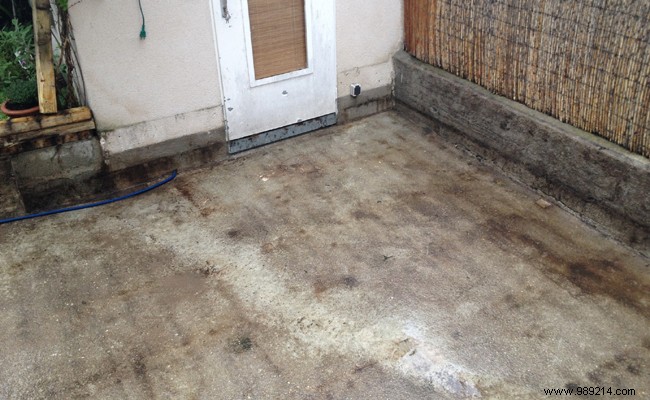In renovation as in construction, the waterproofing of the terrace is not to be neglected, otherwise the underlying structure risks being damaged. Several steps and rules must be followed in order to succeed in this operation.

The decision to waterproof a deck usually stems from various infiltration issues. On a roof terrace, this lack of waterproofing is manifested by the appearance of damp spots on the walls and ceiling of the room below and by significant humidity. On the terrace, it is possible that cracks appear in the concrete, that you see a swelling of the slats or even a detachment of the tile slabs. But that's not all. Also pay attention to traces of mould.
If you observe stains on the baseboards, joints or borders, this indicates a moisture problem due to poor sealing. And there are of course the infiltrations caused by the cracks which can lead to water damage if nothing is done. To detect the origins, the use of a humidity tester will be recommended. You can also consider a dry weather impoundment to find out where exactly the water is infiltrating.
To avoid the consequences of water infiltration or stagnation, there are two solutions. The first is the sealing itself. The idea is to create a real barrier at the level of the slab to prevent water from passing through. This process is recommended when the terrace is above a room. The second possibility is to make a water-repellent waterproofing. The objective of this technique is to avoid water stagnation and to simplify its evacuation. This waterproofing is recommended on terraces with no underlying premises.
There are several. It all depends on whether it is a construction or a renovation. In the event of construction, you can use calandrite which takes the form of a roll of protective bitumen, to be put in place when the terrace is built. This product is composed of a non-woven polyester reinforcement as well as bitumen which will protect the structure from water, snow or even air.

Another possibility: acrylic resin which is used both in the context of a renovation and during construction. The installation of this product must respect stages. The first is to clean the surface with a karcher which eliminates traces of mold and other dirt. Then move on to sealing any cracks that appear on the terrace. To do this, use deck putty to be applied with a gun. Finish the job by applying the resin and let it dry.
For the protection of wooden slabs or tiles, it is better to use mortars by hydraulic sealing which will make it possible to create very effective waterproofing membranes. The bitumen layer is also a good idea, except that its implementation is relatively complex and requires the intervention of a professional who will ensure better quality results.